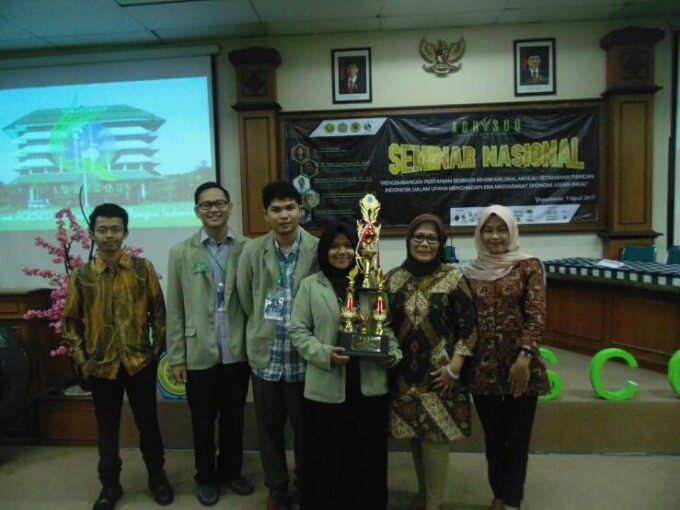
Biogas is one of biomass resources which is potential to be utilized as an alternative energy. Chemically, biogas consists of various matters, one of them is sulfide compound. Despite its small content, it can damage the instruments due to its corrosive characteristic.
“Hydrogen Sulfide in gas usually can be removed physically and chemically, but it costs high and produces derivative waste,” said Lecturer of Faculty of Engineering, Universitas 17 Agustus 1945 Semarang, Ir. Retno Ambarwati Sigit Lestari, M.T., at Faculty of Engineering UGM not long ago.
During an open examination for Doctoral Program at Department of Chemical Engineering Faculty of Engineering UGM, Retno said a biofiltration method is usually used in biochemistry process to remove sulfide compound in biogas, but it never uses snake fruit seed before as its buffer material. Therefore, she conducted the research by utilizing snake fruit seed.
Retno said the hard texture of snake fruit seed contains several compounds which are needed by bacteria. Moreover, it has a physical characteristic which can be utilized as an immobilization medium for bacteria as well as stuffing material inside biofilter column.
The effectiveness test of snake fruit seed as a buffer for sulfide degradation bacteria shows it can be utilized as an immobilization place for the bacteria. The bacteria which is taken from a wastewater treatment of biogas in Srandakan Village, Bantul District, Yogyakarta is proven as being able to degrade sulfide.
“Identification of the sulfide degradation bacteria genetically gives a result that its isolate comes from Bacillus cereus genus with 98% acidity level,” she explained.
Retno further explained the elimination process of hydrogen sulfide in biogas by biofilter method using Bacillus cereus which is mobilized at the surface of snake fruit seed can reduce the hydrogen sulfide content up to 97.15%. This result is obtained at biogas flow rate of 30L/hour while the inlet concentration of hydrogen sulfide is 142.48 ppm and the operation time takes 4 hours.
“The elimination of hydrogen sulfide is affected by its concentration, flow rate of biogas at the biofilter inlet, as well as the inlet axial position,” she added.


